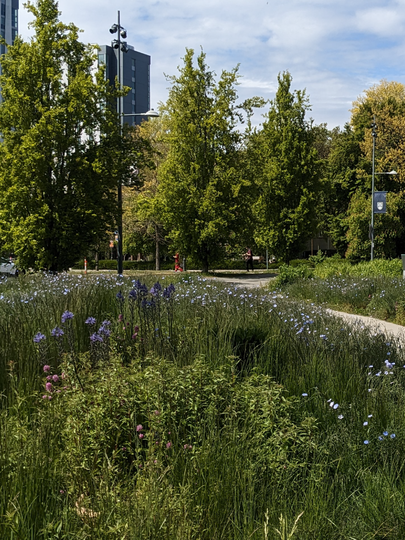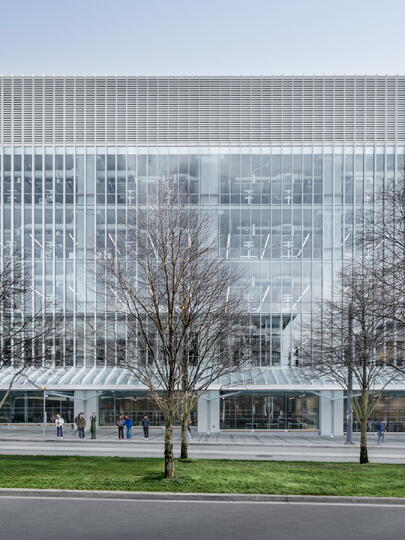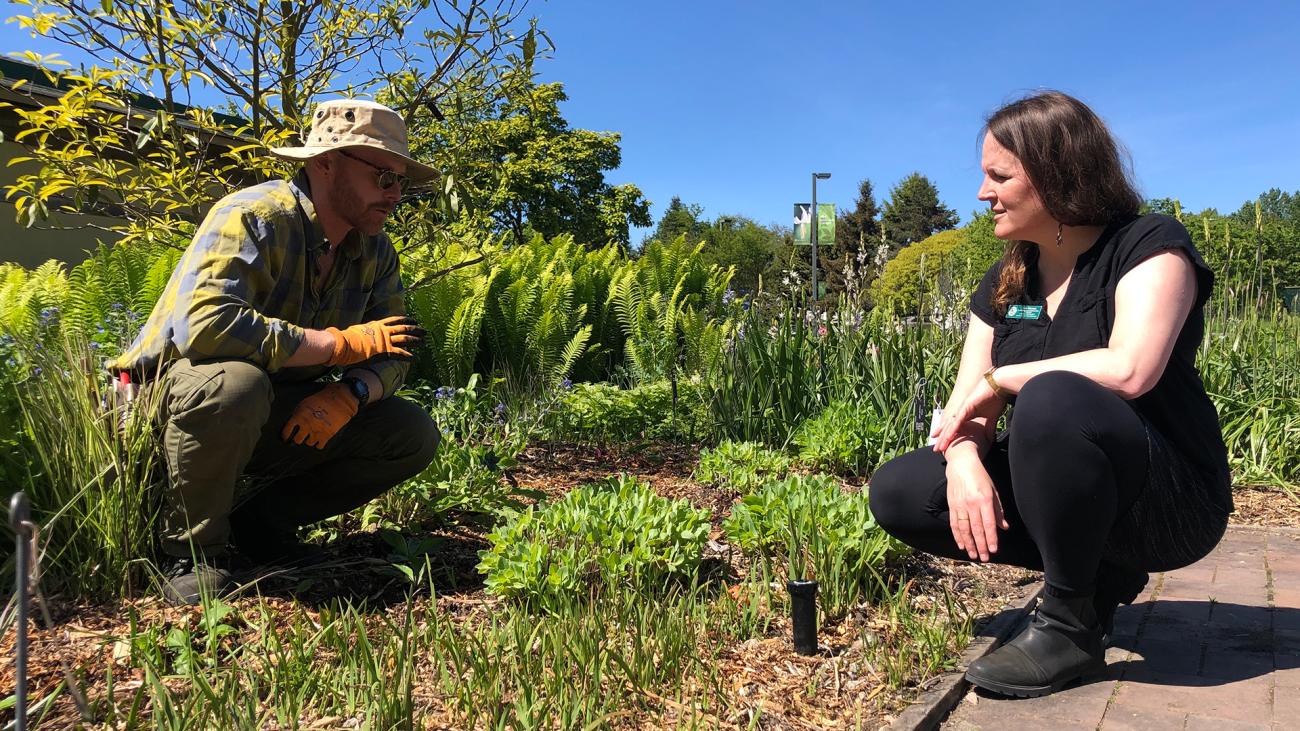Top tips for gardening in a drought
UBC Botanical Garden associate director Dr. Tara Moreau provides top tips for gardening in a dry season and describes what gardens might look like in a climate-changed future.
With BC in the middle of a multi-year drought, and another dry summer likely on the way, green-thumbed residents may be wondering how best to garden in a drought.
UBC Botanical Garden associate director Dr. Tara Moreau (PhD'10) provides top tips for gardening in a dry season and describes what gardens might look like in a climate-changed future.
What are some plants that might do well in a drought?
For their beauty, their drought tolerance, and their appeal to local pollinators, my top three picks are: the Oregon grape, the evergreen huckleberry, and the red flowering currant, all of which are in bloom right now. But for more drought-resistant plants, the Grow Green Guide, a collaboration of Metro Vancouver and UBC Botanical Garden, also allows people to search by soil moisture requirements, as well as plant type, sun exposure, and even garden design.
It’s important to remember that even drought-resistant plants need to be well-established before you can stop watering them. That means regular watering for the first few years of life until they grow large enough root systems to access water stored deep in the ground. Planning ahead is key for climate-friendly gardening.
What are your top tips for drought-resistant gardening?
There are no hard and fast rules in gardening, but here are some general tips:
- Layer plants of different heights and sizes, to provide shade for the plants below.
- Prevent water evaporation by covering the soil, with layered plants, multiple plants, or mulch — but don’t cover everything! Some of our local bees nest in the soil and you may see them pop their heads out of holes in the ground every now and then.
- Invest in trees: In the 2021 heat dome, trees were critical for managing the urban heat effect by providing shade and humidity. We even saw delicate plants survive in the shade of a tree, but die in unshaded areas.
- Track where the sun moves in your garden. Can you provide shade? Move containers or planters to the shade during the day.
- Water low and slow: Apply water slowly, close to the base of the plant, so the soil becomes saturated and the water doesn’t pour off into surrounding ground.
- Avoid watering during the hottest part of the day, from about 10 a.m. to 5 p.m. This prevents rapid evaporation.
- If a heatwave is projected, water your plants ahead of the heatwave, but don’t overwater during the heatwave to avoid further stressing your plants.
- Skip water-intensive tasks like washing your car and instead, water your trees.
- Install rain barrels to capture water overnight. You can use buckets throughout your garden. Stir them every so often so mosquito larvae don’t build up. Cover them with screens so leaf debris doesn’t clog the water. If you can’t lift heavy items, use a small watering can to dip into the bucket.
- Dedicated water savers can bring a bucket into the shower to fill while waiting for the water to warm, then use it for your plants.
- Invest in nurse logs: Use downed trees in your garden as edging or even a feature. As a tree decomposes, it not only provides many micronutrients and supports insects, but also holds water throughout the season.
- Walk around your neigbourhood when things are really dry and see what other people are growing. Talk to your neighbours to figure out how much they’re watering and what’s working for them.
What will gardens look like in 2100?
It’s hard to answer that question because we don’t know what future conditions will be. Our challenge here in Metro Vancouver is that we need to plan for drought but also for winter deluges with atmospheric rivers. So, we’ll need to plan for extremes, including extreme water, extreme heat or cold, and even extreme wind.
Our modelling is showing climate adaptation will be species-dependent. Some will have gains and some will have losses. Biodiversity is key so that we’re not relying on only one species. We can re-imagine traditional lawns into more biologically diverse landscapes that support pollinators and biodiversity.
As nature is adapting, so should we. Notice what you’re planting, what’s doing well, and try something new. That’s what’s amazing about gardening: You never stop learning.
































